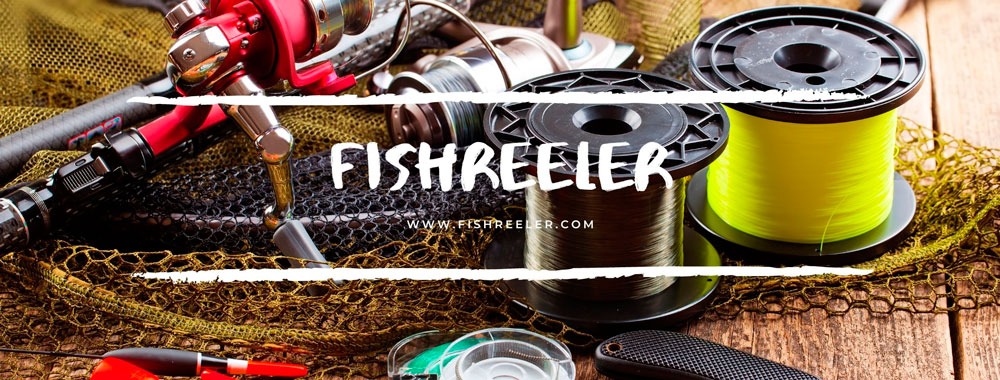
✨Very important! You must always remember: it is not fishing tackle and equipment that catches fish, but an experienced fisherman. A true angler possesses experience and knowledge, understands the specific requirements for each fishing trip, including the ideal fishing rod and reel, fishing line, and tackle. The right tools and the proper technique, combined with the angler’s experience, increase the chances of a fruitful catch. Our tips help improve his experience!
All Types of Fishing Reels
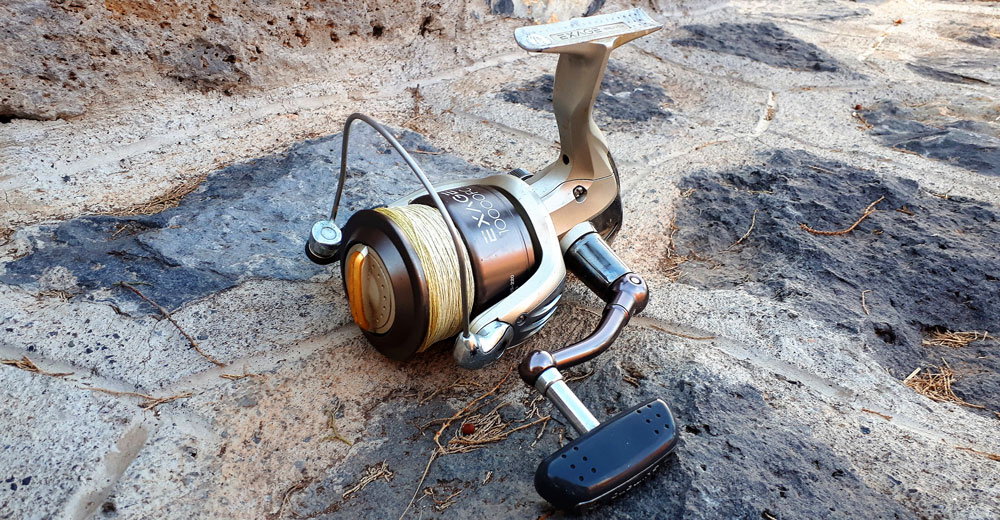
All Types Of Fishing Reels [Briefly]
- Spinning Reels: These are the most popular type of fishing reels, and they are used for a wide variety of fish species. They are lightweight and easy to use, making them ideal for beginners.
- Baitcasting Reels: These reels have a spool that is mounted above the rod, and they are designed to cast heavier lures with greater accuracy. They are more difficult to use than spinning reels, so they are best suited for experienced anglers.
- Fly Reels: These reels are designed specifically for fly fishing, and they have a large arbor that helps to store the line in an orderly fashion. They also feature a drag system that allows you to adjust the tension on the line as needed.
- Trolling Reels: These reels are designed for trolling, which is a method of fishing where the angler drags a lure or bait behind a boat. They feature a large spool and a powerful drag system that can handle larger fish.
- Spincast Reels: These reels are similar to spinning reels, but they have an enclosed housing that helps to protect the line from tangles. They are easy to use and are ideal for beginners.
- Electric Reels: These reels feature an electric motor that helps to retrieve the line quickly and efficiently. They are best suited for deep sea fishing, as they can handle the heavier weights associated with this type of fishing.
- Surf Casting Reels: These reels are designed for casting long distances, and they feature a large spool that can hold a lot of lines. They are best suited for saltwater fishing, as they can handle the heavier weights associated with this type of fishing.
Spinning Fishing Reels for Any Fishing Environment
✨Smooth as Silk: Exploring the World of Spinning Reels. Spinning reels are a popular type of fishing reel used by anglers of all levels. They use a cylindrical spool to store the line and can be easily operated with little maintenance required. Spinning reels are versatile and suitable for a variety of fishing techniques, and can handle different types of fishing lines.
These reels are designed for jigging or casting and feature an open-faced design with a metal bail that prevents line unspooling. They attach to the rod from below, providing excellent balance and a natural holding position. Spinning reels work best with a line less than 10-pound test and are ideal for novice anglers, budget-friendly options, casting in the wind, and ultralight fishing.
To cast a spinning reel, you catch the line with your forefinger, then open the bail and close it after casting. Spinning reels typically have a drag adjustment on the tip of the spool, which allows you to adjust resistance when fighting a fish.
Spinning reels offer versatility, value, and power, making them a great choice for anglers. They are easy to use and offer greater accuracy than spin-cast reels. It’s important to spool the line correctly onto a spinning reel for successful casting, but pre-spooled reels and combos are available for those who are not comfortable with spooling their own line.
Baitcasting Fishing Reels for Effortless Casting and Retrieval
✨Reeling in the Big One: A Guide to Baitcasting Reels. Baitcasting reels are a popular choice for anglers targeting larger freshwater game fish such as bass, walleye, and pike. They are designed to cast heavy lures or bait greater distances than other types of reels, and offer more control over the lure as it is cast, resulting in better accuracy.
Compared to other reel types, baitcasting reels are heavier and mounted above the user’s hand. They feature a semi-enclosed design with a drag mechanism and spool tension knob, providing greater precision when throwing the line and greater casting distance.
Baitcasting reels are versatile and come in a range of sizes suitable for both light freshwater and heavier saltwater fishing. However, they do require more skill to use effectively than spin casts or spinning reels, making them better suited for more experienced anglers.
For those looking to purchase a baitcasting reel without breaking the bank, there are plenty of options available for under $100. A thorough review can help anglers find a reel that meets their needs and provides reliable performance on the water.
Fly Fishing Reels: The Perfect Balance of Functionality and Style
✨Fly Fishing Made Easy: Demystifying the Fly Reel. Fly fishing is a sport that has been enjoyed by anglers for centuries. Fly fishing reels have evolved significantly over the years, from basic handcrafted wooden models to modern designs made from durable materials such as aluminum and carbon fiber.
The design and features of fly fishing reels have been refined to meet the specific needs of anglers, from the size of the arbor to the drag system used.
Reels are an essential piece of equipment in fly fishing. They are designed to store and manage the fishing line, provide drag to help control the fish during the fight and assist with casting. The reel attaches to the bottom of the fly fishing rod and works in conjunction with the fly line and leader to complete the system.
There are two main types of fly fishing reels: single-action and multiplier. Single-action reels are the simplest and most common type of fly fishing reel. They have a spool that rotates once per turn of the handle, which controls the drag system.
Multiplier reels, on the other hand, have a gear system that allows the spool to rotate multiple times per turn of the handle, which can help anglers reel in fish more quickly.
When selecting a fly fishing reel, it’s important to consider factors such as the size of the arbor, the weight of the reel, the drag system, and the material used in construction.
A larger arbor will allow for faster line retrieval, while a heavier reel can help balance out the weight of the rod. The drag system should be smooth and adjustable to allow for control over the fish during the fight. And materials such as aluminum or carbon fiber can provide durability and strength to the reel.
And one crucial factor in selecting the right rod is choosing the appropriate weight for your fly fishing reel. With the right rod weight, you can improve your casting accuracy and make the most out of your fishing experience. So, let’s dive into the world of fly fishing rods and explore how to choose the perfect weight for your reel.
Trolling Reels: The Ultimate Tool for the Serious Angler
✨The Powerhouse of Reels: Understanding the Advantages of the Conventional Reel. A trolling fishing reel is a style of a fishing reel that is typically used for larger fish, such as salmon or steelhead. These reels are designed to handle heavier lines and lures than traditional spinning reels, making them ideal for trolling.
Trolling fishing reels are designed to handle the stresses and strains of trolling, such as high-speed retrieves and sudden strikes from fish. Many trolling reels also feature a bait clicker, which makes a clicking noise when the bait hits the water, letting the fisherman know when to cast his lure.
One key feature of trolling fishing reels is the line capacity. Trolling often requires a significant amount of fishing line to be let out behind the boat, so reels with larger line capacities are preferred. These reels are often designed with a level wind mechanism that evenly distributes the line onto the spool, preventing tangles and ensuring even coverage.
Another important aspect of trolling fishing reels is the drag system. The drag system helps to control the tension on the line during the fight with a fish, preventing the line from breaking or the fish from pulling the rod and reel into the water. Trolling fishing reels have powerful drag systems that can be adjusted quickly and easily to accommodate different fish species and water conditions.
Trolling fishing reels can be either conventional or spinning reels. Conventional trolling reels are typically larger and heavier, designed to handle heavier lines and bigger fish. Spinning trolling reels are often smaller and lighter, designed for lighter lines and smaller fish species. Regardless of the type, a good trolling fishing reel should be durable, smooth, and have a fast retrieve rate to allow for quick line retrieval when necessary.
Easy and Efficient: Spincast Fishing Reels for Every Angler
✨Going Back to Basics: The Simple Elegance of the Spincast Reel. Spincast reels are a type of fishing reel that’s easy to use and offers smooth performance. These types of reels feature a fixed spool that’s enclosed in a housing, and the line is cast by pressing a trigger or button. The centrifugal brake system helps to prevent backlash, and the result is an accurate cast with minimal effort. Because they’re so easy to operate, spin-cast reels are a great choice for anglers of all levels of experience.
One major advantage of spincast reels is that they minimize the chance of backlash, which can be frustrating for anglers trying to use other types of fishing reels. Additionally, spin-cast reels are generally very affordable, making them a great option for budget-minded anglers. If you’re looking for an easy-to-use fishing reel that won’t break the bank, a spin cast reel is a great choice.
Spincast reels are a great choice for beginner anglers looking for an easy-to-use reel. They feature a metal nose cone that hides all of the components and a button on the back for releasing the line. This makes them very user-friendly, as there is no need to worry about tangled lines or complicated mechanisms. Additionally, they have a drag adjustment mechanism that allows you to control how much resistance the fish feels when pulling the line. This helps ensure that you don’t lose your catch due to too much tension on the line.
Spin-casting reels are also very affordable and offer many of the same features as more expensive spinning reels. They are lightweight and simple enough for kids to use, yet powerful enough for adults to enjoy fishing with them. Many anglers find no reason to switch from a spin casting reel once they have become accustomed to it, as it offers everything they need in terms of performance and convenience.
Bigger and Better: Heavy-Duty Electric Fishing Reels for Big Game Fishing
✨The Best of Both Worlds: The Versatility of the Hybrid Reel. An electric fishing reel is a type of fishing reel that uses an electric motor to assist with the winding and retrieval of the fishing line. Unlike traditional manual fishing reels, electric fishing reels are powered by rechargeable batteries or external power sources and can be operated with the push of a button or lever. The electric motor in these reels can significantly reduce the physical effort required to reel in a catch, making fishing more accessible and enjoyable for anglers of all ages and physical abilities.
Electric fishing reels come in various sizes and configurations, from small handheld models suitable for light freshwater fishing to large and powerful electric reels designed for deep-sea fishing and big game fishing. Some electric fishing reels also come with advanced features such as automatic jigging, depth counters, and variable speed control. These features can help anglers improve their fishing success by allowing them to adjust their reel’s performance to match different fishing conditions and target species.
While electric fishing reels can be a significant investment, they are often considered worth the cost by serious anglers who prioritize efficiency and comfort on the water. However, it is essential to keep in mind that some fishing regulations may prohibit the use of electric fishing reels in certain locations or for certain types of fishing, so it is essential to check local regulations before using one.
Riding the Waves: Surf Fishing Reels for an Unforgettable Experience
✨Surf’s Up: The Top Picks for Surf Fishing Reels. Surf fishing reels are designed specifically for fishing in the surf, where waves and currents can create challenging conditions for anglers. These reels are typically larger and heavier than other types of fishing reels, with a capacity to hold a significant amount of fishing lines. Surf fishing reels are designed to provide the power and performance necessary to handle the larger fish that are commonly found in surf fishing environments.
Surf fishing reels can be classified into two main types: spinning reels and baitcasting reels. Spinning reels are the most popular choice for surf fishing due to their ease of use, versatility, and ability to handle a wide range of fishing line sizes. Baitcasting reels, on the other hand, are preferred by more experienced anglers who prioritize accuracy and control over ease of use.
Surf fishing reels also come with various features designed to improve performance and convenience. These include anti-corrosion coatings to protect against saltwater damage, waterproof drag systems to prevent water from entering the reel, and oversized handles and knobs for better grip and control. Additionally, some surf fishing reels may come with specialized line guides designed to reduce friction and casting distance, making it easier to cast into the surf.
Built for Precision: Centerpin Fishing Reels for Accurate and Controlled Casting
Centerpin fishing reels, also known as centerpin or float reels, are designed for use in freshwater fishing environments such as rivers and streams. These reels are designed to provide a high level of precision and control, allowing anglers to effectively present the bait to fish in areas with strong currents or other challenging conditions.
The design of centerpin fishing reels is characterized by a cylindrical shape with a large diameter spool, which allows for easy and smooth line retrieval. These reels are typically operated by hand, with the angler using their fingers to control the speed and direction of the line. The lack of a drag system on centerpin fishing reels means that the angler must rely on their own skill and technique to control the fish.
✨Centerpin fishing reels are often preferred by experienced anglers who prioritize precision and control over ease of use. They are commonly used for catching species such as steelhead and salmon, where an accurate presentation of bait is crucial. In addition, centerpin reels are popular in catch-and-release fishing, as they allow anglers to release the fish unharmed without having to touch them.
When selecting a centerpin fishing reel, anglers should consider factors such as the size of the spool, the material of the reel, and the bearing system. Additionally, the rod used in conjunction with the reel should be matched to the size and weight of the species being targeted. With the right centerpin fishing reel and a little practice, anglers can enjoy the precision and control necessary for successful freshwater fishing.
Taking on the Big Blue: Offshore Fishing Reels for the Serious Angler
Offshore fishing reels are designed for use in deep-sea fishing environments, such as the open ocean, where large game fish species such as marlin, tuna, and swordfish can be found. These reels are characterized by their large size and heavy-duty construction, which allows them to handle the strong and fast runs of these powerful fish.
✨Offshore fishing reels typically feature a lever drag system, which allows anglers to quickly adjust the amount of pressure being applied to the fish during the fight. This drag system is crucial for preventing the fish from breaking the line or spooling the reel, which can occur when targeting these large and powerful species.
When selecting an offshore fishing reel, anglers should consider factors such as the size of the reel, the material of the frame and spool, and the gear ratio. Additionally, the line capacity of the reel should be matched to the species being targeted, as well as the line strength and type. Offshore fishing reels are often used in conjunction with heavy-duty rods and other specialized fishing equipment.
Chilling Adventures: Ice Fishing Reels for Cold-Weather Angling
✨Ice Fishing Essentials: The Lowdown on Ice Fishing Reels. Ice fishing reels are specialized fishing reels that are designed for use in cold weather conditions, such as when fishing on frozen lakes or rivers. These reels are often smaller and simpler in design than traditional fishing reels, and they are designed to be used with ice fishing rods, which are shorter and sturdier than other types of fishing rods.
Ice fishing reels typically feature a spool that is designed to release line smoothly and evenly, even in extremely cold temperatures. This is important because cold weather can cause traditional fishing lines to become stiff and brittle, which can make them more prone to breaking. Ice fishing reels also typically have a small line capacity, since ice fishing typically involves targeting smaller fish species.
When selecting an ice fishing reel, anglers should consider factors such as the size and weight of the reel, the material of the frame and spool, and the type of drag system. Additionally, the line capacity of the reel should be matched to the species being targeted, as well as the line strength and type.
Many ice fishing reels have specially designed reel feet that allow for a “pistol grip” when jigging. This reduces strain on your wrist and hand, making it more comfortable and enjoyable for anglers.
How to Choose the Right Fishing Reel?
Fishing reels come in a variety of styles, each with its own advantages and disadvantages. When selecting the right reel for your needs, it is important to consider ease of use, fishing style, cost, and longevity. Baitcasters are the most complex type of reel and require an intermediate level of skill. Spinning reels are suitable for all skill levels and can be used in both fresh and saltwater environments.
They range in price from $50-500 and are ideal for inshore fishing as well as some offshore capabilities. Spincast reels are the simplest type of reel and are best suited for freshwater ponds and lakes targeting panfish, bass, trout, and catfish. They range in price from $20-50 making them an affordable option for beginner anglers.
✨Here are some factors to consider when choosing a fishing reel:
- Type of Fishing: Different types of fishing require different types of reels. For example, baitcasting reels are great for freshwater fishing, while spinning reels are better suited for saltwater fishing.
- Fishing Line: The type and strength of the fishing line you plan to use should also be taken into consideration when choosing a reel. The reel should be able to handle the weight of the line and the size of the fish you plan to catch.
- Gear Ratio: The gear ratio of the reel determines the speed at which the spool rotates. A higher gear ratio means a faster retrieve, while a lower gear ratio provides more power for reeling in larger fish.
- Drag System: The drag system controls the amount of resistance on the line when a fish pulls. A smooth and strong drag system is important for landing big fish.
- Size and Weight: The size and weight of the reel should be comfortable for the angler to handle, especially if they plan to fish for long periods of time.
- Brand and Price: While brand and price should not be the only factors to consider, they can provide insight into the quality and durability of the reel.
Final Thoughts
When it comes to fishing, having the right equipment is essential. One of the most important pieces of equipment is a fishing reel. There are many different types of reels available today, and understanding how they work can help you make the best choice for your needs. Knowing what type of fishing you intend to do will help you narrow down your choices and pick the right model for your needs. Whether you’re a beginner or an experienced angler, having the right reel can make all the difference in your fishing success.
All Types of Fishing Rods
Spinning Fishing Rods (Spin)

A spinning fishing rod is a type of fishing rod that is used to generate centrifugal force in order to cast the bait or lure. The main advantage of using a spinning fishing rod is that it provides anglers with greater control over their casts. In addition, spinning fishing rods are also generally more affordable than other types of fishing rods. For these reasons, spinning rods are a popular choice among anglers of all levels of experience. A spinning rod is a type of fishing rod that is specially designed for spinning reel fishing. Unlike other types of fishing rods, spinning rods feature a smaller butt section and a longer tip, which gives them increased sensitivity and allows anglers to fish with lighter lures.
Bait Casting Fishing Rods

A bait casting rod, also known as a spin casting rod, is a type of fishing rod that is used to cast baited hooks and lures. The bait casting reel is attached to the top of the rod, and the line is cast out using a relatively simple overhead motion. Baitcasting rods are generally considered to be more versatile than other types of fishing rods, as they can be used for a variety of different fish species and fishing styles. However, they can be more difficult to use than other types of rods, and it takes some practice to get the hang of baitcasting. Baitcasting rods usually have a trigger-type grip, which gives you more control over the rod and reel.
Telescoping Fishing Rods

Telescoping fishing rods are those that collapse in on themselves for easy transport and storage. There are three primary types of telescoping fishing rods: spinning rods, baitcasting rods, and fly rods. Spinning rods have a soft tip, are very lightweight, and are well balanced so that they can be easily handled by anglers. Baitcasting rods have a more aggressive action and are designed for casting heavier lures or baits. Fly rods are the lightest and most delicate of the three types of telescoping fishing rods. They are designed for casting very light flies to wary trout and other fish. Telescoping fishing rods are a great option for anglers who want the convenience of a collapsible rod without sacrificing quality or performance. They are available in a wide range of prices and styles to suit any angler’s needs.
Ice Fishing Rods

There are a few different types of fishing rods that can be used for ice fishing. These rods are typically made of fiberglass or graphite, and they range in length from 2-6 feet. Another popular type of ice fishing rod is the jigging rod, which has a shorter overall length and a heavier action. These rods are perfect for angling with smaller jigs or lures, and they usually have trigger grips for easy one-handed operation. Finally, there are spinning rods designed specifically for use with larger ice augers. Whichever type of ice fishing rod you choose, be sure to match it with the appropriate reel and line for optimal results.
Fly Fishing Rods

Fly rods are typically made of graphite, fiberglass, or a composite of carbon and fiberglass. They can be broken down into three pieces for easy transport in a fishing vest or backpack. There are four basic types of fly rods: single-action rods, two-handed rods, switch rods, and tenkara rods. Single-action fly rods are the most popular type. They are relatively short and have moderate to fast action. They are best for trout fishing in smaller streams. Two-handed fly rods are longer and have a slower action than single-action fly rods. They are best for big fish like salmon and steelhead on large rivers or lakes. Switch fly rods are also long with a slow action. They can be used for both single-handed and two-handed casting. Tenkara rods are short and have a very soft action. They are best for small streams and tight quarters.
Ultra-Light Fishing Rods

There are a few different types of ultra-light fishing rods. Perhaps the most popular type is the graphite rod. Graphite is a very lightweight material, which makes it perfect for ultra-light rods. It is also very strong, meaning it can handle larger fish without breaking. Other materials that are often used in ultra-light rods include bamboo and fiberglass. Bamboo is a natural material that is both lightweight and strong. Fiberglass, on the other hand, is not quite as strong as graphite but it is more affordable.
Surf Fishing Rods

Surf fishing rods are designed to be used in the surf. They are usually longer and heavier than other rods and have a larger guide ring to help reduce friction from the salt water. Some surf rods also have a built-in fighting butt, which helps you fight big fish without getting pulled into the water. There are two types of surf fishing rods: bottom fishing rods and trolling tackle.
Bottom fishing rigs usually have a shorter, stouter build to help handle the weight of heavy sinkers needed to keep bait anchored in the waves. These types work best for targeting fish that stay close to the ocean floor, such as halibut, catfish, and snapper. Trolling tackle is designed for days when the fish are biting further out from shore. These rods have a long, slim build that helps keep baited lines taut in choppier water conditions.
Trolling Fishing Rods

Trolling is a type of fishing where bait or lures are drawn through the water behind a moving boat. This can be done at slow speeds, or even faster speeds depending on the situation. While traditional spinning and baitcasting rods can be used for trolling, there are certain features that make a trolling rod ideal for this type of fishing.
Boat Fishing Rods

Boat fishing rods are specifically designed for use while fishing from a boat. They are generally heavier than other types of fishing rods, which helps to increase the distance that your bait can be cast. Boat fishing rods also generally have larger guides, which can help to prevent line tangles when using heavier line weights. In addition, many boat fishing rods come equipped with a trigger grip, which allows for increased control when casting and fighting fish.
Popular Fishing Gear


I live in Tenerife (Canary Islands) for the last 10+ years and share my daily fishing experiences on my website. Many years of personal experience as a fisherman and the vast experience of my friends allow me to write professionally on any fishing topics (from choosing a flashlight and equipment to deep-sea fishing).
All of my advice is based on practical real-world experience and will be useful to both novice anglers and professionals. Read more about the author.
Affiliate Disclosure: FishReeler.org sometimes gets paid for listings, through sponsors or affiliate programs like Amazon, Ebay, Cabelas, Bass Pro Shop, Shimano, Daiwa, Rapala, Renn, Okuma, KastKing, etс. Clicking a link helps keep FishReeler.org free, at no extra cost to you!
About the author: Each article is verified by the fishing expert Sergio Smirnoff. The articles are written by professional and amateur fishermen with 20+ years of fishing experience.
Note: The views and opinions expressed in this article are those of the authors and do not necessarily reflect the official policy or position of any agency. The articles are for informational purposes only, share your opinions in the comments and join the fishing discussions, let's share our fishing experiences together!


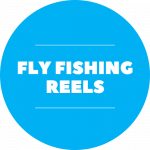
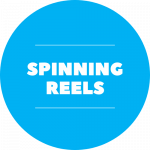
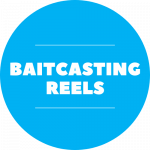




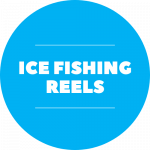











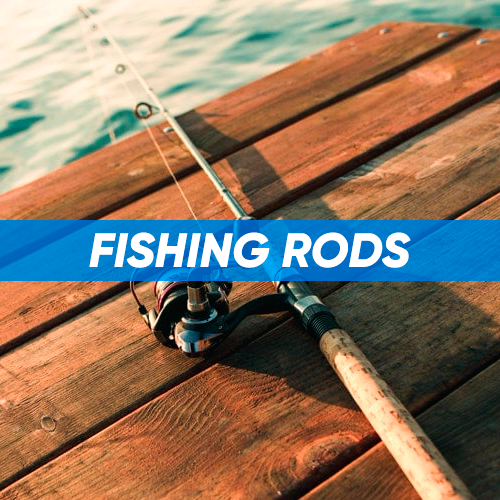
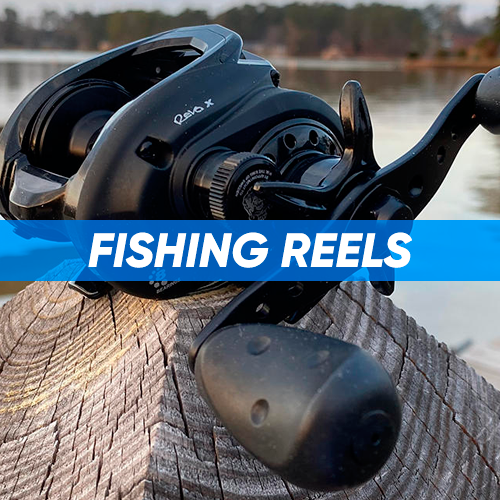
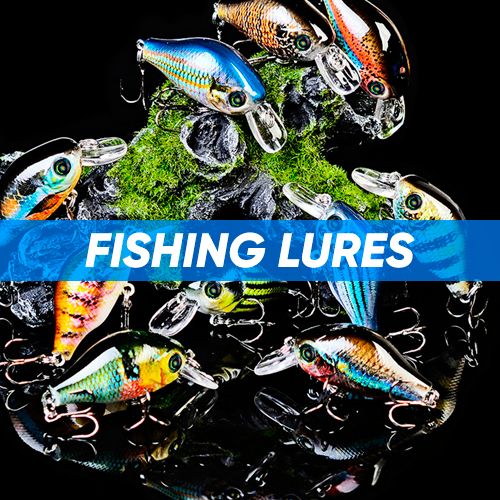
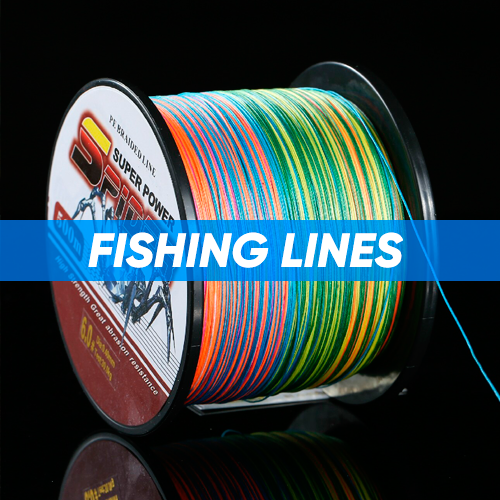

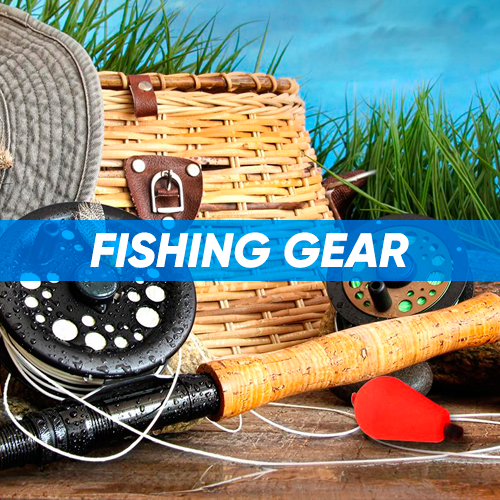
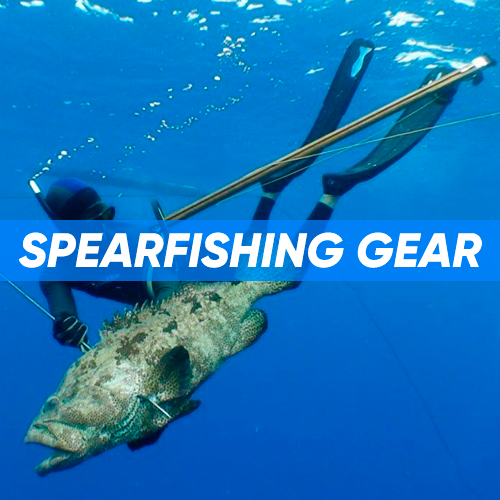
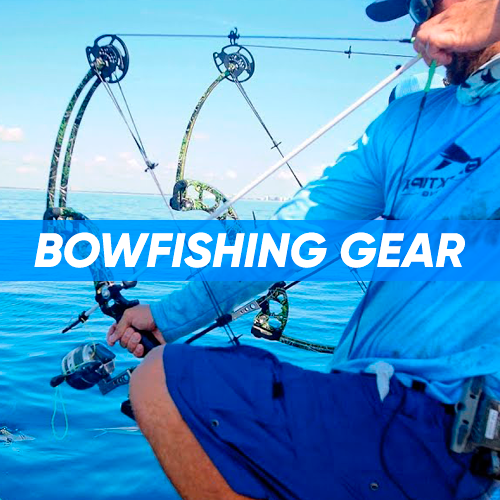
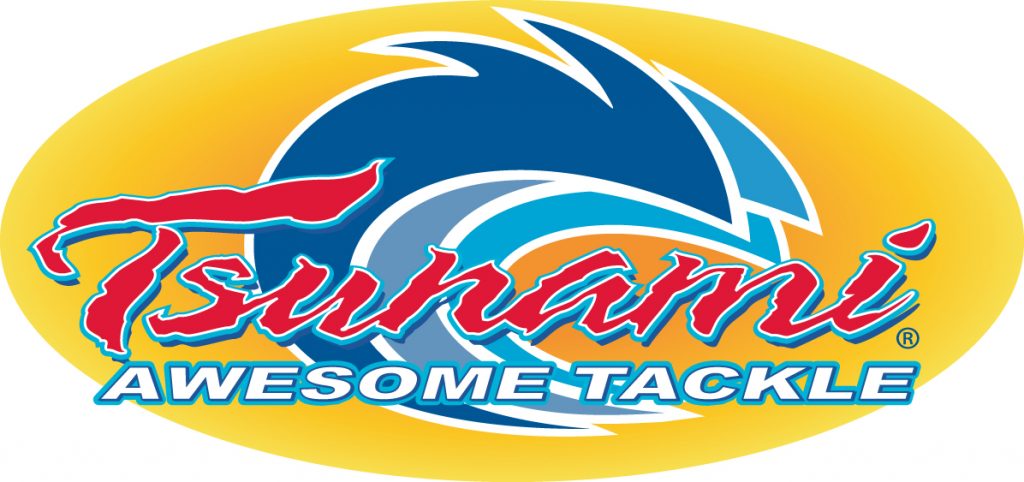





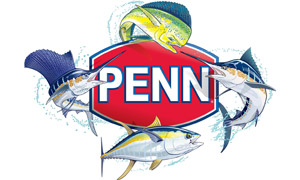
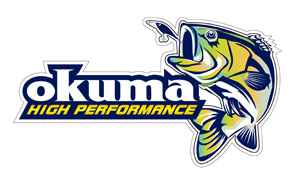

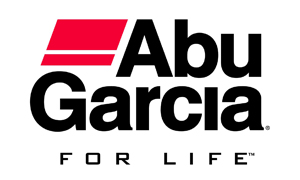
This article provides useful information on the different types of fishing reels and how to choose the right one for your needs. I strongly agree with the tips in this article on choosing the right type of fishing reel. The reel is a key part of the fishing rod and needs to be properly balanced.
A good quality reel is essential for a successful fishing trip. It’s also important to match the reel to your level of experience. I think it’s important to consider the weight of the reel and the type of line you’ll be using. A beginner angler should use a spin-cast or spinning reel, while an experienced angler can use a baitcasting reel.
There is a lot of helpful information in this article about the different types of fishing reels and how to choose the right one for your needs. I appreciate that it includes tips for both experienced anglers and beginners and that it highlights the importance of choosing a reel that is made from durable materials. Their prices seem very reasonable, and I will definitely keep this brand in mind when shopping for new fishing gear in the future. Thanks for the helpful advice!
I have been reading and following your site for many years. You write the most detailed descriptions of all types of reels and rods. There is a lot of text that is unique to the fisherman. Few have explained why the Baitcasting Reel has a trigger ledge for ease of use. That point was not clear to me. The texts – on how to fish are not always detailed for novice anglers. Especially when fishing for example “catalufa fish”. As I know it is caught only at night, with a small moon, at shallow depths, and on a glowing little silicone bait. In your recommendations on the choice of fishing tackle you offer from your experience and practice, you publish unique photos. It all helps me save money on my purchases. Lots of cheap tackle. Keep writing and working on the site. Looking forward to more ideas.
This guide is extremely helpful for those who are looking to purchase a fishing reel. It provides in-depth information on the different types of fishing reels, their advantages and disadvantages, and what each type is best used for. This guide was especially helpful in helping me decide which type of reel to buy. I would definitely recommend it to anyone who is serious about fishing.
This article was very informative and helped me understand the different types of fishing reels. I would definitely recommend it to anyone who is looking to learn more about this topic. The author did a great job of explaining the different features of each type of reel, and I appreciated the examples given for each one. This article is a valuable resource for anyone who wants to be a better angler. Thanks for sharing your knowledge!
This is an excellent overview of the different types of fishing reels and their purposes. I particularly appreciate the detail on reel materials and construction, as this is often a key factor in durability and performance. This will be an extremely useful resource for anyone in the market for a new reel or looking to upgrade their current one. Thank you for the informative and well-written article!
If you’re looking for a guide that breaks down the different types of fishing reels and helps you determine which one is best for your fishing style, look no further than Fishreeler. This guide was extremely helpful in helping me understand the strengths and weaknesses of each type of reel and ultimately helped me choose the right reel for my next fishing trip. The guide is well-written and easy to understand, and I would recommend it to anyone who’s looking for a little help in choosing the right fishing reel.
The site has a lot of useful text about fishing drones, deep-sea fishing, night fishing with flashlights, and underwater crossbow fishing. What struck me most were the drones. which can drop bait at a great distance from the shore. After reading this, I saw this process in practice several times. Fascinating. Navigators, fishing echo sounders, fish finders, radios, rescue equipment, buoys, electric fishing reels – just interesting and many products presented. I see a professional approach to choosing brands of fishing reels, rods, and lines. Now my favorite rod on your recommendation is Goture travel fishing rods 4pcs. Cheap and quality takes up little space and is lightweight when traveling. Thanks.
I really enjoyed reading this article! The information provided was very informative and gave a great overview of the different types of fish reels available on the market. It was helpful to see the pros and cons of each type listed, as well as the recommended uses for each. The tips for the maintenance and upkeep of the reels were also very useful. Overall, a great resource for anyone looking to purchase a new fish reel.
I was particularly interested in the section on baitcasting reels. It was helpful to see the different braking systems and how they can affect the performance of the reel. I also appreciated the suggestion to practice casting with a baitcasting reel before using it in a real fishing situation.
One thing I would like to see in a future article is more information on selecting the right reel for a specific type of fishing. It would be helpful to have more information on the specific features to look for and how they can benefit certain fishing techniques.
Thank you for sharing this informative and useful article!
I love using my baitcasting reel when I go bass fishing. It really helps me to get my lure out there accurately and helps me to land some big catches.
The brake system on my baitcasting reel is really useful when casting heavy lures. It allows me to control the speed and distance of my cast, which is essential when fishing for larger fish.
I’ve had trouble with the guide eyes on Ugly Stick. While it’s a decent entry-level rod, I highly recommend checking out Cabela’s brand rods. Yes, they might be a bit pricier, but they hold up much better in the long run. Shimano also makes fantastic rods, although they can be a bit more expensive as well. One thing to note is that newer model rods often have a split grip, which allows for better vibration sensitivity since you’re in direct contact with the rod rather than feeling it through the handle.
When it comes to choosing the right rod, it’s important to pay attention to the guides. Fuji is definitely the best, while Winn seems pretty solid too. If you plan on going after bigger fish that reside in structure and require a braided line for added strength, it’s important to avoid cheaper guides, as they can get torn up quickly by braided line.
Of course, reels are just as important as rods. In my opinion, Lews makes the best reels on the market. If you’re just starting out, I’d recommend going with a spinning reel since they’re easier to manage and more forgiving when it comes to bad casts. On the other hand, baitcasting reels are more accurate and can throw long distances. They’re great for finesse fishing, but they can be a bit more complicated and require practice to master. People might tell you that you can’t easily throw lighter lures on bait casters, but that’s largely dependent on the type of rod you pair it with. For example, I have a couple of bait casters set up on 7′ medium light action rods, and I can throw smaller lures better with them than on my spinning rods.
If you’re looking to learn more about rod and reel selection, I highly recommend watching some videos or reading articles on the topic. The type of rod you choose should depend largely on the lure you’re using and how you plan on fishing it. This will also affect the type of line you use and its weight. If you do go with a bait caster, I’d recommend choosing one with a higher gear ratio, as you can always reel slower if needed, but you can’t go any faster than the reel allows with a lower gear ratio. Also, try to choose a reel with as many bearings as your budget allows, as more bearings generally mean a smoother reel and a better feel when retrieving your lure.
In my opinion … The Ugly Stik GX2 is a popular fishing rod that is widely recognized for its durability and value for money. It is an upgraded version of the original Ugly Stik, designed with a sleek, modern look and improved features to enhance its performance.
One of the key features of the Ugly Stik GX2 is its strength. The rod is made with a blend of graphite and fiberglass, which creates a balance of sensitivity and toughness. This combination provides the angler with the sensitivity required to feel bites and the strength to handle larger fish.
Another great feature of the Ugly Stik GX2 is its versatility. It is designed to be used in both freshwater and saltwater environments, and it performs well in a variety of fishing techniques. Whether you are casting lures or bait fishing, the Ugly Stik GX2 can handle it all.
One of the most impressive aspects of this fishing rod is its price. It is an affordable option for both beginners and experienced anglers, making it accessible to a wide range of people. Its durability and reliability make it an excellent investment for anyone looking to get into fishing or upgrade their current gear.
However, there are a few downsides to the Ugly Stik GX2. Some anglers have reported that the rod can be a bit heavy, which can be tiring during long fishing sessions. Additionally, the guides on the rod may not be as high quality as some other options on the market, which could result in some line tangles.
Overall, the Ugly Stik GX2 is an excellent choice for anglers looking for a reliable, affordable fishing rod. Its strength, versatility, and value for money make it a popular option for both beginners and experienced anglers alike.